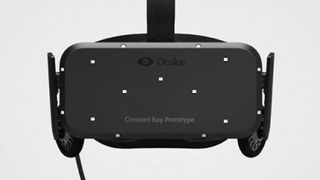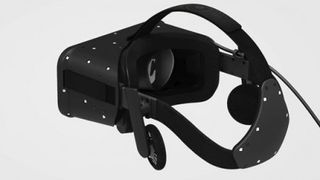Virtually there: how to build your own Oculus Rift PC today
You can get the DK2 now, but you'll need a tasty rig to run it
So what will you need for your Oculus Rift PC? Here are the main considerations to bear in mind for the various components.
Graphics
The biggest strain the Oculus Rift is going to put on your PC is in the graphics department. While realistic graphics aren't the be-all and end-all of creating immersive effects in virtual reality – after all, we're seeing some very exciting Oculus Rift projects that make use of stylised graphics, rather than photo-realistic ones – there will no doubt be some very graphically demanding games that are going to look phenomenal, and you'll want your PC to be able to handle them.
It's also worth noting that for the best levels of immersion, the DK2 model currently uses two OLED screens (one for each eye) that display a resolution of 960 x 1,080 each. So not only will your graphics card need to be powerful enough to display impressive graphics, but it will have to be able to do it twice.

There are rumours that the consumer version may ship with even higher resolutions. In the future we may even see an Oculus Rift that can handle 4K resolutions – great for immersion, but your GPU might struggle. At a minimum, the Oculus Rift needs to display the graphics at a 60Hz refresh rate. While this is pretty standard for most monitors, for the best effect you'll want to be able to display the graphics at 75Hz.
In order to keep the virtual reality world around you from feeling sluggish – or having a sense that things are moving in slightly slow motion – or from causing motion sickness, latency is also an important factor to keep down, with a system latency of 50 milliseconds being the current goal, although ideally it would be under 20.
John Carmack, Oculus VR's CTO and a no doubt familiar name for PC gamers, has been particularly concerned with latency issues in modern GPUs. He was also seen at the launch of Nvidia's G-Sync project, so there is a good chance that there have been ongoing discussions with Nvidia about including virtual reality optimisations in its new GPUs.
We also recommend going with a GPU with at least 3GB of GDDR RAM, though 4GB or more would be preferable, thanks to the high resolutions needed for an optimal virtual reality experience.
Get daily insight, inspiration and deals in your inbox
Get the hottest deals available in your inbox plus news, reviews, opinion, analysis and more from the TechRadar team.
Processor
While the GPU of your Oculus Rift rig will be doing most of the heavy lifting, it doesn't mean you should neglect your processor.
In the past, when deciding what processor to go for, the choice between an AMD or Intel CPU was pretty close, and often boiled down to budget or personal preference. These days, the choice is a lot easier, though sadly not particularly because of what Intel is doing right, but what AMD is doing wrong.
It's also a bit of an open secret that Intel has been taking an interest in virtual reality in general, and Oculus Rift in particular. Intel is keen to paint its chips as the de facto choice for VR enthusiasts, and we're inclined to agree, because the company has been showing some interesting technological advances coming out of its R&D department regarding improving the virtual reality experience, such as using bicubic texture lookups and barrel distortion to help improve the appearance of graphics when wearing a head-mounted display.
AMD hasn't been neglecting VR either, though what we've heard so far from the company about VR has been mainly to do with its graphics cards. If you've got a Sandy Bridge or later Intel CPU, you should be good to go when it comes to getting the most out of the Oculus Rift.

The rest
You don't want to cram in a load of high-end components only to let them be bottlenecked elsewhere in your PC, so you'll want to make sure that the other areas of your rig are up to the task. We recommend at least 8GB of RAM and, for future-proofing, we suggest going for a motherboard that can hold more than one GPU in SLI or Crossfire.
Although multi-GPU setups won't be necessary for the Oculus Rift, it can give you a bit of leeway later on for upgrading your machine, though we recommend going for one powerful GPU, rather than two (or more) less beefy ones.
You'll also want a decent PSU to power all of your components. Because you may well be running some pretty power-hungry bits of kit – especially if you're going to be using more than one GPU – you'll want a PSU that provides plenty of juice to all of your components while remaining efficient.
For this we recommend something such as the excellent Corsair RM1000, which offers 1,000 watts while remaining 80 PLUS Gold Certified. It has a zero-rpm fan mode, which means the fan won't even start during low and medium loads, thanks to the excellent heat management of the PSU – so there won't be any whirring noises while you're trying immerse yourself in VR.
